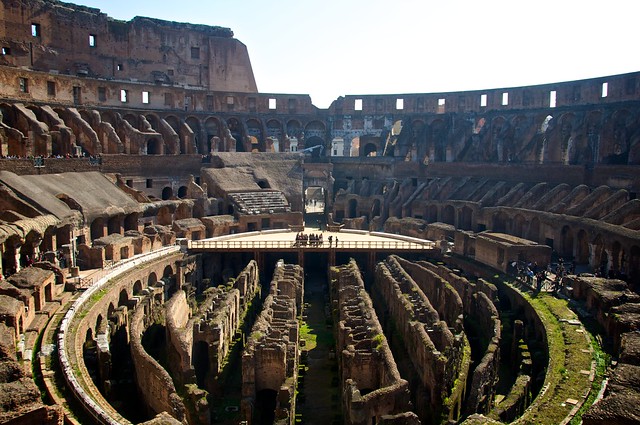


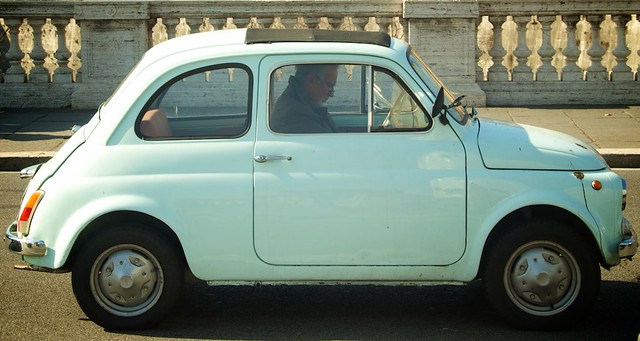
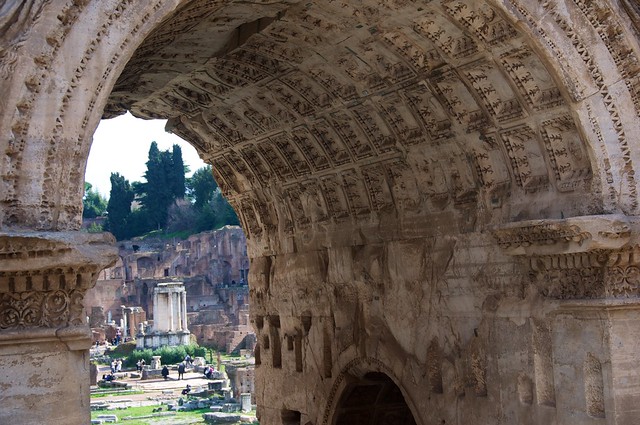

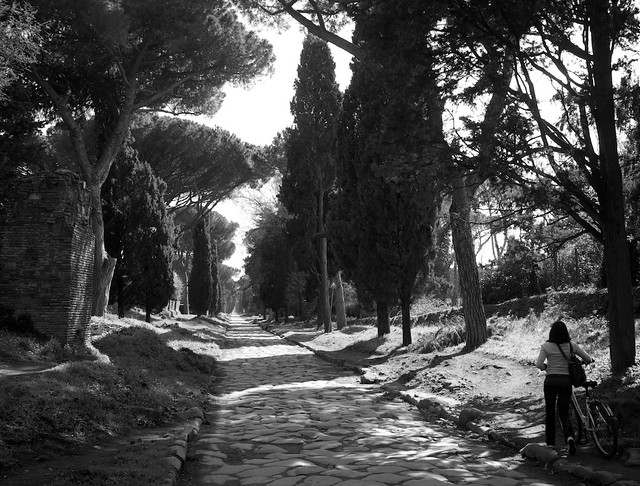
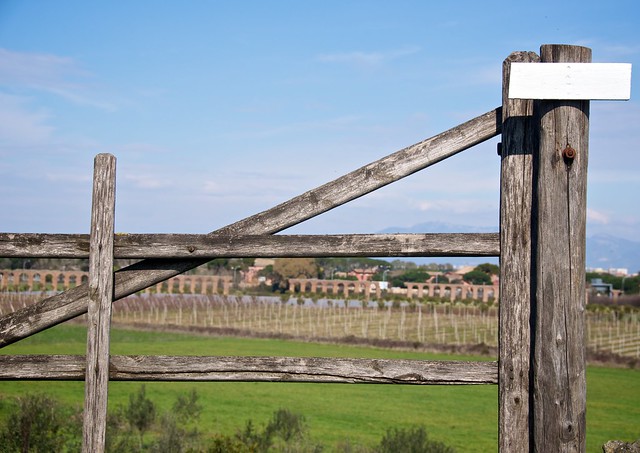

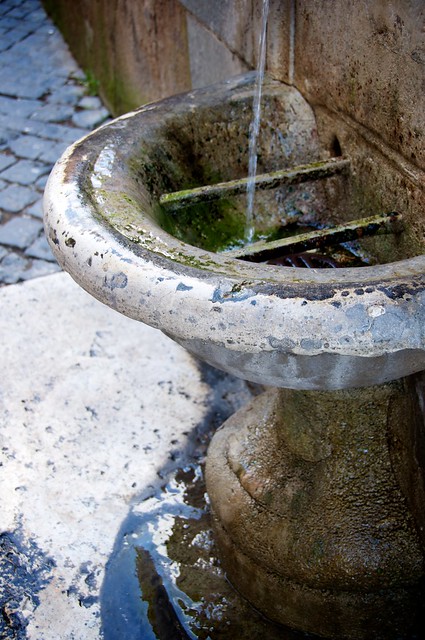
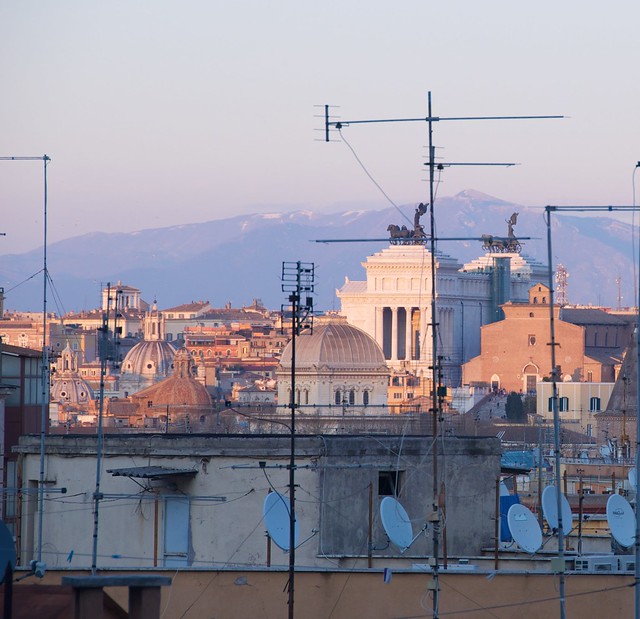
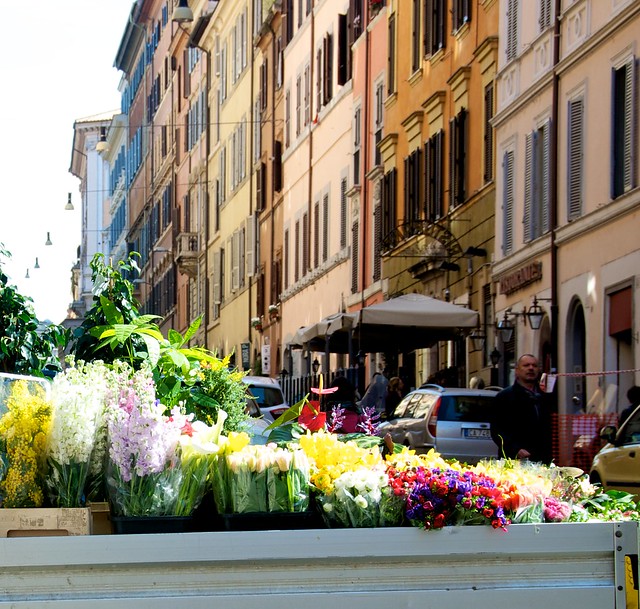
(all of these pictures were taken by Karlos; full set here)
Of all the history that I've learned about since living here, Roman history is by far my favorite. Ancient Roman remains traverse Europe, and as the saying goes, all roads lead to Rome. It is true. Here were my favorites: walking everywhere, biking the Appian way, drinking cheap good red wine, sampling some excellent craftbrews in the Trastevere neighborhood, the fact that arugula and artichokes are everywhere, and that it was sunny everyday. In trip planning, we made a map, checked out a Lonely Planet Rome guidebook, found places on RateBeer, and read the Wikitravel Rome site.
The more I travel around, the more I tend to see that although many cultures have extensive food cultures, the impending explosion of cheap fast junky eats prevails. If you're visiting a city you have to try very hard to find good local foods (a saved map is a good option with researched locations, such as Bir and Fud in the Trastevere neighborhood). While finding oases of delis, restaurants, and mom and pop shops is becoming an increasing rarity, they do exist, they are just a lot harder to find. It's extremely depressing to see junk foodification of so many places occurring. While there isn't the sheer number of obvious fast food chain outlets as say there are in the US, the overall experience I see is the dumbing down of foods to the point where you can eat the same in Germany, Belgium, Spain, France, Holland, Austria, and now Italy. At the end of the visit, I couldn't stand to see another shop selling pizza by the slice, doner kebab, hamburgers, hot dogs, and fries. I realize that cost of rent and the influx of constant tourism makes monotonous, easy to prepare, cheap foods a much more normal experience. The sad part is that we weren't even in the touristy areas that long. Maybe this doesn't bother others as much as it bothers me.
I don't know, maybe I'm just jaded, or incorrectly recalling my experiences before moving, but I certainly felt that I moved from a place where locals took their food seriously, and that innovative menus, seasonal local foods, and culture were sort of becoming the norm for budding and established restaurants, (I guess you have to have the food environment in the US to drive that?). As long as you aren't eating fast food or at a place that is trying to replicate fast food, you'd generally find something good and decent on the menu. In contrast, what I've noticed in most of my travels is that restaurants in tourist and neighborhood areas have similar offerings, as if trying to venture out and offer different, seasonal foods was going to veer the restaurant directly off course. Wouldn't you be frustrated as an eager foodie traveler if most of the restaurants you were eyeing hungrily had basically slight variations of menus from Appleby's or Ruby Tuesdays
So what did I find? The smaller supermarkets were a good option on stocking up for lunch and breakfasts. The delis in the back always had lots of marinated veggies, olives, a dozen kinds of dried ham, breads, and cheeses. Even scanning the shelves you see lots of more normal foods showing up such as lots of whole grains, good olive oils, fresh veggies, lots of dried beans, and of course pastas. The fresh markets in open air plazas, and dedicated fruit and vegetable shops were a treat for the eye and stomach (and obviously the kitchen if you so happen to book a place with a kitchen). Museum cafes tend to have good menus. I enjoyed the general laid back approach to dining, and loved sampling some local brews from the craft beer scene at Bir and Fud and Ma Che Siete Venuti a Fà. I kept an eye out for local specialties that weren't too tourist looking too. Rome has drinking water fountains all over the city; what a delight to have free drinkable water everywhere.
I type all this opinion-crap after only spending 4 days in the lovely city of Rome, so what the heck do I know? The Roma Pass is a good option if you are going to see the sites. We didn't actually end up doing many indoor museums, although if I had a week or longer, I would certainly have done so. Since some of our friends went a few days before us, they recommend buying the ticket for the Colosseum, Roman Forum and the Palatino, at the Palatino. We did this and spent an afternoon at the Roman Forum and Palatino, and since the ticket was valid for 2 days, we did the Colosseum the next morning, but avoided the long queue. To get out of the city, you'll see it's easy to leave behind, consider biking or walking the Appian way. We used only public transport and walking to get around. Actually from Termini station, you can ride Metro B to the Garbatella stop and then walk down Circonvallazione Ostiense towards the Appian way (use a map that shows you street signs). You'll cross a major road, and then walk up what looks like a bike path. There will be signs. Walk along the path for a while and it'll dump you out on another road. On this road, make a right and you'll be next to the bike rental spot. We rented bikes, got a map and detailed explanation (EUR 10 per bike, all day rental until 4 pm).
The walking tours in the Lonely Planet guidebooks were really well organized and easy to follow. We spent a lot of time walking everywhere. Everything is close by, takes some navigating effort, but the stumble upon stumble of beautiful lovely things keeps you entertained even when your feet in their most comfy shoes have swollen and are banging the sides of your sturdy cons. I brought back olives (natuurlijk!), farro, and some spices.

Nilam,
ReplyDeleteThanks for the beautiful narrative (and Karl for the photos!). At least now you know what it means when they say in Belgium: "Alle wegen leiden naar Rome..." (and the history behind that saying)